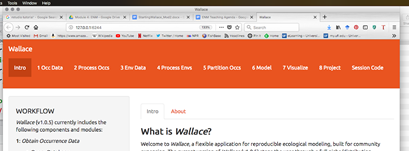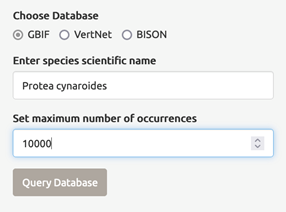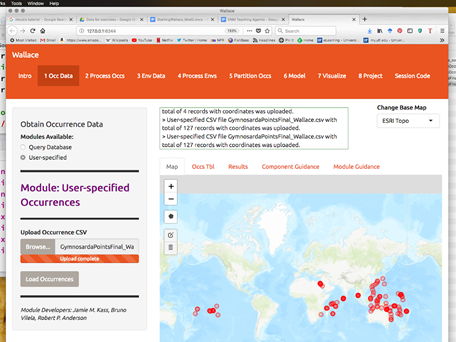Exercise 2 - Loading occurrence points
There are two options for loading occurrence data in Wallace. The first option is to directly query several biodiversity databases including GBIF. This is good for generating quick and dirty niche models to explore data, but Wallace does not allow you to clean data in all the ways we have discussed in the data processing module. For this reason, you can also load in your own occurrence data that you have processed using your own processing pipeline or data that is not yet served through a database connected to Wallace. For this exercise, we will query GBIF directly using Wallace.
a) Click on “1 Occ Data” in the menu bar at the top of the Wallace window

b) In the panel on the left, select the “Query Database” radio button.

Notes on the Wallace interface:
● As we begin importing and processing data, a detailed record of what has been done will be recorded in the log window above the map.
● If you need a refresher on the background of a particular modeling step, you can click on the “Component Guidance” tab
● If you need help understanding the elements of a particular modeling step, you can click on the “Module Guidance”.
b) Select the “GBIF” radio button and enter a species name of your choice. I will be using Protea cynaroides for this example, in case you want to follow along exactly. I also increased the number of occurrences I am searching for to 10,000, because I want all the points.

c) Click “Query database”. Your occurrence points should all show up as red dots on the map.

Note: You can interactively explore your points by clicking on them on the map (see below). You should see all the information associated with that record from the table you uploaded. This is helpful for verifying your occurrence points before progressing through the workflow.
Second Note: You can inspect the point data as a spreadsheet under the “Occs Tbl” tab next to the “Map” tab.